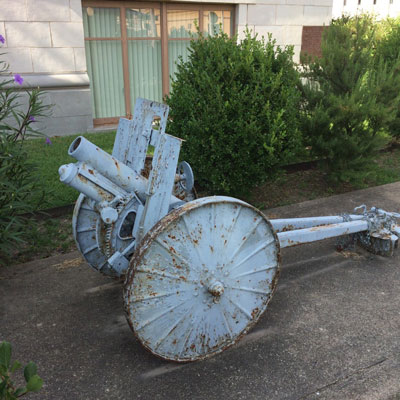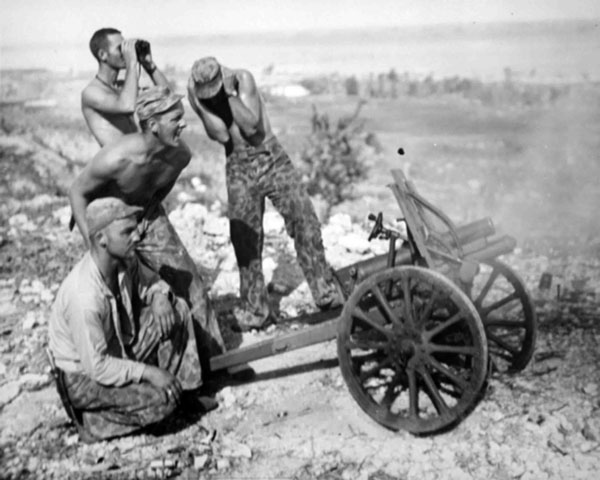
For many years a Japanese artillery piece hid in broad daylight behind some bushes on the northwest corner of Hunt County Courthouse Square. Recently those bushes were removed and voila, a Japanese 105-millimeter field howitzer appeared. There is definitely a story behind that scrappy little armament covered with peeling paint and maybe in need of restoration.
This pitiful World War II relic has quite a story. It is a Type 92 field howitzer designed in the early 1930s by the Japanese military. It saw action in the Sino-Japanese War and later played an important role in several major battles in the Pacific Theater against US forces. After every battle the Allies won, all weapons were sent to the United States where they were tested before being decommissioned. Smaller ordinance was often taken home by soldiers and sailors but tanks, even a small howitzer, were too big to fit into a duffle bag.

By the surrender of Japanese in 1945, the United States had more than enough war relics. Numerous scrap metal drives were held all over the country in the early years of the war. Not only did individuals donate worn out iron instruments, but cities, towns and municipalities donated old cannons used in World War I. When the war was over, the cannons, artillery pieces, and howitzers came to rest in parks, courthouse squares, and other patriotic sites throughout the country. Once these field pieces were accepted by the US Army, the Ordinance Chief sent a copy of the “scrap” certificates to the donor. So, in 1942 the City of Greenville, or maybe Hunt County, donated a cannon they owned for patriotic reasons. But where did that cannon come from?
In April 1929, the current courthouse was formally opened to the public with parades, hour-long speeches, and lots of excitement. And in the parade, there was a smaller cannon that came either from World War I or even as far back as the Spanish-American War. There is one sentence in a three-page article of the courthouse dedication that mentioned the little cannon but with no more information.
On July 5, 1898 the Greenville Messenger reported that Greenville celebrated the news of American fleet victory at Santiago, Cuba. A group of men ran over to the Sherman, Shreveport, & Southern Railway (SS&S) shop to roll their cannon down the street to the square. Was that the cannon donated in World War II?
As much as $90 billion dollars’ worth of surplus war property was held by the US government throughout the country. Once again, the US government doled out useless armaments. Any entity that donated scrap metal in form of artillery qualified for a replacement, even if it was made in Japan. That’s how our artillery piece came to reside at 2500 Lee Street.

After WWII we were sending so much aid to japan, Japan did not want the ability to wage war again, hundreds of Artilary was sent home for ballast in the empty ship holds then put on a train in oakland ca and shipped to fallon NV for target practice, dont think your piece has any connection but thats how a bunch of this stuff got to the US